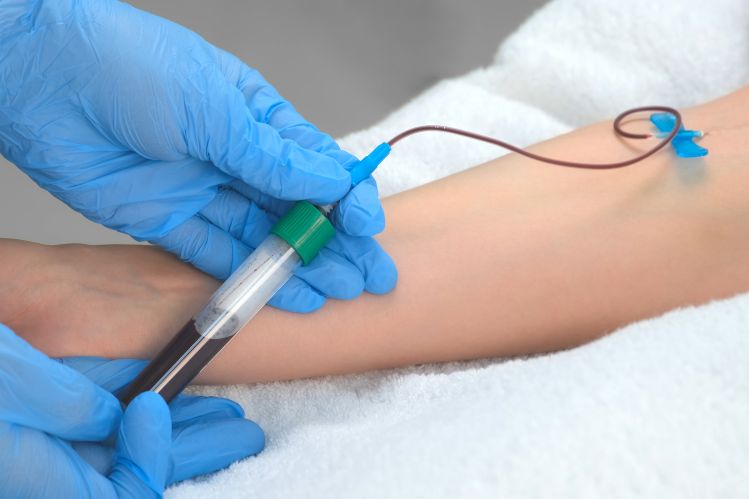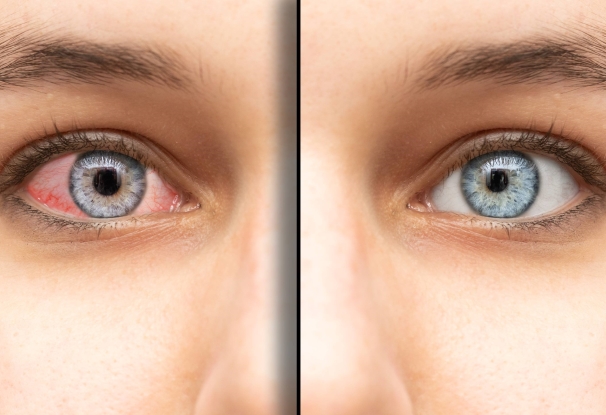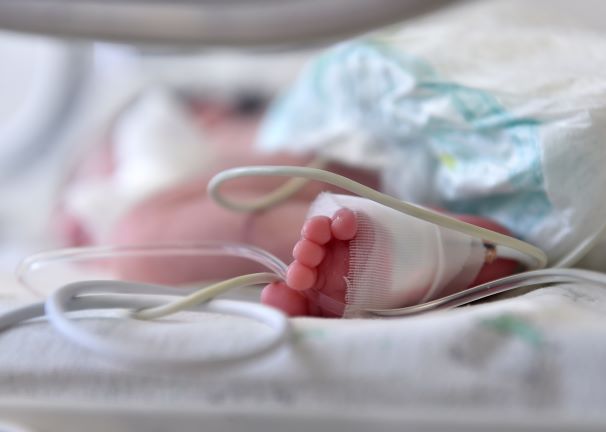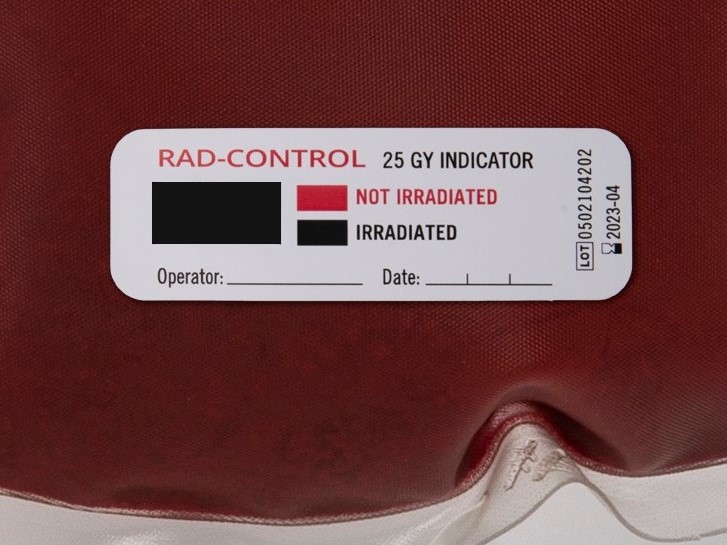Transfusion-Associated Graft-versus-Host Disease (TA-GvHD) is a very rare but mostly fatal disease. The immune system of preterm babies and neonates (infants up to 28 days after birth) is still very fragile. Transfusion triggers in neonates are “controversial and mainly based on expert clinical opinion, although recent randomised trials (…) are starting to influence clinical guidelines.”1 Some hospitals exclusively provide irradiated blood8, while others choose a more restrictive approach. In any case, preventing TA-GvHD remains a key factor in paediatric transfusion. Here is a selection of the most commonly applied clinical indications which apply specifically to infant patients:
“Irradiation is vitally important,
because basically TA-GvHD has
a more than 90% mortality rate
if a baby contracts it.8”
„
Intrauterine transfusions
Intrauterine transfusions are typically performed as part of a cordocentesis (umbilical cord puncture). If evidence of severe foetal anaemia occurs, relatively large volumes of blood need to be transfused rapidly. Foetal anaemia can occur as part of foetal infections, blood incompatibility between mother and child, during a transfusion between foetus and mother, or in the context of twin pregnancies or multiple births. It is recommended that fresh red cells and platelets are irradiated prior to intrauterine transfusions.2,7
Neonatal exchange transfusions
The purpose of an exchange transfusion in newborn babies is to remove aliquots from the baby’s blood, replacing it with donor blood in order “to remove abnormal blood components and circulating toxins, whilst maintaining adequate circulating blood volume.”3 Exchange transfusions correct severe anaemia and jaundice (especially in premature infants) and remove free maternal antibodies, amongst others. These transfusions involve large volumes of blood relative to the size of the baby, and the risks of neonatal exchange transfusion “should be clearly weighed against the benefits.”4
Neonatal and infant cardiac surgery
Neonates requiring early repair of congenital heart disease may need to undergo cardiac surgery with cardiopulmonary bypass. Survival rates following these surgeries have significantly improved as a result of advances in surgical techniques and management, such as the use of miniaturised bypass circuits to reduce the need for blood product transfusions.5,6 In any case, the infants’ immune systems are still immature, and the large volumes of blood, as well as the preferred use of fresh blood, carry risk factors for these young patients. Irradiation of blood products prior to transfusion remains a common solution for risk minimisation in this regard.
Neonatal top-up transfusions
Up to 80% of preterm babies weighing less than 1500 g at birth are transfused on at least one occasion.1 The so-called “top-up” transfusions are mainly carried out to compensate a reduced red cell production, which occurs due to losses from repeated blood tests, different metabolic abilities, and reduced iron stores.8
Intrauterine, neonatal exchange transfusions with or without cardiac surgery, as well as top-up transfusions cover only part of the spectrum where irradiation is indicated when it particularly comes to transfusions for premature babies or neonates. Major further indications for transfusions of irradiated blood, such as for example those for haematological disorders, radiation exposure/accidents or stem cell transplants, apply to all age groups and are not included in this article.
Sources:
1 © 2020 British Society for Haematology and John Wiley & Sons Ltd; British Journal of Haematology, 2020, 191, 704-724: Theodora Foukaneli et al: Guidelines on the use of irradiation blood components
2 Dr med. Christine Achenbach: Itrauterine Transfusion https://www.praenatalzentrum-essen.de/schwangerschaft/intrauterine-therapie/intrauterine-transfusion/
3 The Royal Children’s Hospital; Exchange Transfusion: Neonatal; https://www.rch.org.au (PDF)
4 Science Direct: Exchange Blood Transfusion, Haemolytic Disease of the Newborn, Jayashree Ramasethu MD, FAAP, in Handbook of Paedriatric Transfusion Medicine, 2004
5 Pouard P, Bojan M. Neonatal cardiopulmonary bypass. Semin Thorac Cardiovasc Surg Paediatr Card Surg Annu. 2013;16(1):59-61. doi: 10.1053/j.pcsu.2013.01.010. PMID: 23561819.
6 Elassal et al. Journal of Cardiothoracic Surgery https://doi.org/10.1186/s13019-022-01830-w
7 JPAC Transfusion Handbook 10.2. Neonatal transfusion https://www.transfusionguidelines.org/transfusion-handbook/10-effective-transfusion-in-paediatric-practice/10-2-neonatal-transfusion
8 The BloodBankGuy, Episode 34, https://www.bbguy.org/2017/07/10/034/
Picture credit: Shutterstock
Authors: Dr. Harald Sekljic, Dr. Clemens Troschl, Mag. Lisa Springer









